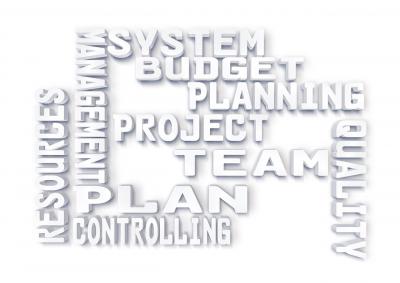
Change is one thing you have to prepare for as an organization because it’s inevitable to occur.
You need to have the best change management strategies in place to adapt to it, grow your business, and reach your goals.
We will help you successfully implement change, prepare for it, control it, and ensure your team adapts to it.
ASSESS YOUR CURRENT STATE
Assess your current state to determine whether or not change is necessary for your organization. Consider who you are and where you are coming from to ensure success. For example, is the business moving in the right direction? Have you managed to reach all your goals with the current systems and processes? Why do you need change? And What are you changing?
Determine why change is necessary for your organization and only implement it if it’s going to help you reach your goals. State areas that need to change and know what you are changing to ensure success.
Identify departments that are going to be impacted by the change and determine how it’s going to benefit you in the long run. Answer key questions; “Does the change affect the entire organization or certain departments?” “Which departments are going to be impacted?” And “How does the change benefit the entire company?”
Find out how the organization is going to benefit in the long run to ensure success. Make sure everyone involved understands the importance of change. Highlight the opportunities for everyone to get your team excited about the transformation and make it easy for them to adjust.
Consider timing and find out whether or not it’s the right time to implement the change. Doing this ensures you do things the right way and at the right time. Answer key questions; “Is this the best time to evolve?” “Are we ready for it?” “Do we have what it takes to adapt?” “Do we have the required resources?” And “Can we survive the losses, if things don’t go according to plan?”
CLARIFY YOUR VISION
The best way to effect and manage change is to know where you are going and what you want to achieve. So, clarify your vision. Write it down and understand it. Specify the steps to take and come up with an effective plan to work towards your goal.
State what success looks like and write down everything you want to achieve.
Consider your initial goal, when you started the business, and determine if what you want to accomplish now aligns with it. What was your vision when you launched the business? Why do you want to implement change? Does it help you reach your ultimate goal? Does it align with your vision? Make sure it aligns with your main goal or helps you get closer to it.
Set short-term and long-term goals to ensure success. Work on them daily and encourage your team to focus on reaching set goals. Talk to your staff about the importance of reaching set goals and the need for change. Help them adjust to it and enable them to reach their goals.
Keep your eye on the market and your competitors throughout the transitional period to ensure you stay on the loop and avoid implementing ineffective systems or creating products that no one is interested in. For example, if you are working on a new product launch, ensure there is still a market demand for your product when you launch it.
If the organizational change involves changing service delivery, find out where your customers stand. Constantly study customer behavior to determine whether or not they’ll be comfortable with the new system.
Consider the competition to ensure you don’t create something that they have already developed. If they have and you still want to go ahead with it, make sure it brings additional value to clients and is better.
WEIGH RISKS
The key to a successful change management strategy is not only identifying rewards but risks as well. Know the associated risks to avoid failure and ensure a successful shift. What risks are involved in the process? What do you stand to lose if things don’t turn out as planned? And how are you going to overcome losses?
Identify the tradeoffs and determine how you are going to capitalize on them. Understand that you may have to channel certain resources to some departments to effect the change at the expense of other sectors. So, decide if it’s worth it. Make sure it benefits the organization and all employees in the long run.
If the shift is necessary for business growth, go ahead and take the risk. Identify departments that can operate with fewer people or financial support and move the resources to sectors that need more people or money. Sectors that are the key drivers of organizational change. This will benefit the organization and all employees in the end. Especially when done right. So, if you don’t have enough resources, consider taking that route.
If moving resources around isn’t an option and you need capital to make the change, look for ways to raise the money if it’s money that you need. If you need more talent, hire more employees. If you need to extend working hours, go ahead and do so but make sure you compensate workers for extra time.
INVOLVE YOUR TEAM
The most effective way to manage change is by involving your team throughout the process. You want them involved in the entire process to keep them excited about the shift. What better way to do it than listening to their viewpoints and knowing where they stand?
So, ask them what they think about the change. Talk about what needs to be changed and have them air their opinions. If they are not comfortable with the move, ask them why they are not happy with it. Listen to their grievances and make everyone feel heard.
Involving workers every step of the way allows you to create a friendly and effective work environment and makes it easy for them to accept and prepare for what lays ahead.
If you have many employees and can’t listen to what everyone has to say, work with managers instead. Call regular meetings to discuss the change and make sure each department is represented.
Talk to your managers about the need for a shift and how it’s going to benefit the organization and employees. Ask for their opinions and listen to what they have to say.
Make sure you all have a clear picture of where you are going and what needs to be accomplished.
Ensure all departmental leaders deliver the same message to their teams and speak the same language. Encourage them to spread positivity, get their teams excited about the change, and make them see the benefits that come with it.
Understand that you may face resistance from employees and determine how you are going to deal with it. Realize that you may have to make tough decisions that will benefit the company in the long run and stick to them.
If the shift is good for the organization, go ahead and implement it. Your team will have to adjust to it. They will be glad you made the move when they start to see the benefits tied to it.
Consider the shareholders or people who will be directly affected by the change and involve them in the process. Talk to them about the move and make sure they understand the opportunities that come with it.
Include the figures to get them excited about the shift and easily accept it. For example, talk about sales projections. Highlight where you are and how much you are making monthly, quarterly, and yearly. Mention how much you will make if you were to change certain processes or systems.
Focus on your marketing strategy and daily or weekly conversion rates. Explain how you can reach more people and increase your conversion rates if you take a different approach.
Do adequate research to ensure you provide accurate information. Don’t mention big numbers for the sake of winning the argument and getting people on board.
EXPERIMENT
The best way to determine whether or not the changes you want to implement are right for the organization is by testing your systems. Find out how employees are dealing with the change and how it’s impacting business growth by experimenting.
When you identify what needs to be changed and the areas impacted, create a plan of action. Outline steps to take and assign roles and responsibilities. Develop a clear step-by-step plan to make it easy for everyone involved to carry out their roles and work towards set goals.
Determine the effectiveness of the plan and the impact the change has on the entire organization. Set time limits. Give employees 3 months to adapt to change, fill their new roles, and familiarize themselves with the new systems and processes.
At the end of the 90 days, evaluate results. Find out how the business was impacted and how employees are handling the change. Focus on the positive and negative outcomes, and make the necessary adjustments.
Focus on every department impacted by the change. If the change affected the entire organization, take it one step at a time. Focus on one team at a time and find out how that particular department was affected.
Pay attention to the most important information. For example, progress made, challenges faced, setbacks encountered, and goals met.
How has the department and organization benefited from the change? Have business processes improved? Are employees working faster and with ease? Are you able to reach your goals faster? Has employee productivity improved? And did you reach all set goals?
Next, evaluate sales performance. What are your profit margins? Is there an increase in sales? What are your conversion rates? What were your sales goals? And Did you reach them?
Consider your marketing department. How effective is your new strategy? Have you reached your target audience? Have customer relations improved? Are people happy with your customer support? How many people have you turned into clients? And has your mailing list grown? If so, by what percentage?
Run a complete analysis to measure the effectiveness of your strategy. If the change has a positive impact on the business, continue with it. If certain areas need more adjustments or particular departments failed to reach their goals, implement the necessary changes. Find out why certain processes and systems aren’t working and move in the direction of success.
Understand that change takes time and be patient. It takes time for employees to adjust to new roles and new ways of carrying out tasks. So, give them time.
Set realistic goals, accept that you won’t see the desired results right away, and take it one step at a time.
COMMUNICATE EFFECTIVELY
Good communication is key to reaching your goal. It allows you to easily track progress, identify loopholes, assess employee productivity, isolate effective processes from ineffective ones, and reach your goals.
So, make it your goal to communicate with your workers on an ongoing basis. Know how far they’ve gone, what they have achieved, and how close they are to adapting to new systems.
Establish clear communication channels to make it easy for everyone to voice their opinion, state their challenges, and easily reach set goals.
Agree on the best ways to communicate grievances, challenges, obstacles, and successes.
Choose people who will be responsible for handling complaints and monitoring progress. Select people who are approachable to make it easy for workers to communicate, talk about their challenges, and do their job.
Make sure everyone knows where to go in case they run into problems or face challenges.
Once the issue has been brought to you, consider everything said and offer solutions. Work with departmental leaders and make room for suggestions. Find out what challenges the employees have, the obstacles they are facing and provide practical solutions.
Run weekly and monthly meetings. Make sure everyone is aware of the progress the company’s making and the failures encountered. Go over your goals and remind everyone what’s expected of them. Make sure your team knows what they are supposed to do and empower them to reach set goals.
Keep your meetings short and engaging. Have an agenda and focus on it. Don’t go off-topic and don’t address anything that is not part of the agenda. Know what you want to achieve from the meeting before calling it and focus on your goal.
Encourage everyone to participate and make it easy for them to do so. Appreciate positive and negative feedback. Make the meeting remote-friendly so that all expected attendees can participate. For example, if you have to include key stakeholders or contractors, you will need to use meeting apps like Zoom Video Conferencing, Skype, or GoToMeeting.
PREPARE FOR CHANGE
Realize that new and unexpected challenges will constantly arise as you move through change and prepare for them. Be willing to course-correct and adjust as you move towards your end goal.
Anticipate obstacles or challenges and plan for them. Make sure your team members know the steps to take when they encounter setbacks.
Constantly track progress and reward early wins to keep your team motivated.
Identify areas that need improvement and implement the necessary adjustments.
Don’t be afraid of failure. Be willing to experiment with new ideas and learn as you go. If you weigh the benefits and realize that they far outweigh the risks, go ahead and make the turn.
Make it your goal to always provide the required resources to implement the change. Make sure workers have enough talent, money, and time to effect the change and adapt to it.
Search for new information that will help you reach your goal.
Run weekly or monthly assessments to determine whether you are still moving in the right direction or not.
Train your team and help them adapt to change. If you assign new roles and completely change the way employees work, provide training. Hire an expert to help your team familiarize themselves with the new roles and work with ease.
Talk about the new company culture and make sure everyone is aware of it. If the shift has a direct impact on customers and how they receive certain services, make it easy for employees to explain the move. For example, let’s say you offer 24/7 online support and decide to provide 24/7 online support on weekdays only, help employees easily explain the shift to clients. They can say the company has created a knowledge base to make it easy for customers to quickly access the information they need without contacting customer support.
Highlight the benefits of shifting over to a new system and make customers see the advantages that come with it. Mention at least three things they’ll benefit from it. Find out how the change is going to help them reach their goals faster, resolve common issues, and easily deal with challenges.
If you provide better solutions and make your customers’ lives easier, they will easily embrace the change.



